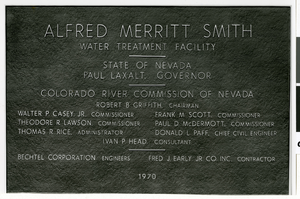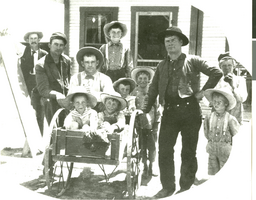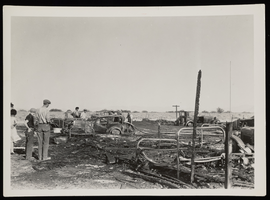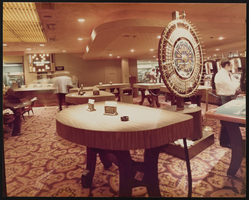Search the Special Collections and Archives Portal
Search Results

Photograph of the Alfred Merritt Smith Water Treatment Facility building dedication plaque, Las Vegas, Nevada, 1970
Date
Archival Collection
Description
Image

Photograph of the Board of Directors of the First National Bank of Nevada (now First Interstate Bank of Nevada), 1969
Date
Archival Collection
Description
Image

Photograph of a Mail delivery cart, Las Vegas, 1908
Date
Archival Collection
Description
Image

Photograph of fire's destruction at dam worker housing site, Williamsville (Nev.), March 1931
Date
Archival Collection
Description
Image

Photograph of fire's destruction at dam worker housing site, Williamsville (Nev.), March 1931
Date
Archival Collection
Description
Image

Photograph of tables and gambling wheel inside Stardust, Las Vegas (Nev.), circa 1974
Date
Archival Collection
Description
Image
University of Nevada, Las Vegas Office of Media Relations Records
Identifier
Abstract
The University of Nevada, Las Vegas (UNLV) Office of Media Relations Records (1969-2003) primarily contain copies of UNLV faculty, staff, and alumni newsletters including
Archival Collection
Stephen G. Brown Literary Papers
Identifier
Abstract
The Stephen G. Brown Literary Papers (approximately 1974-2020) consist of the literary work of University of Nevada, Las Vegas (UNLV) professor Stephen G. Brown. The collection contains journals, sketch books, published and unpublished manuscripts, and literary criticism articles written by Brown. Collection also includes digital files relating to Brown's work as an author.
Archival Collection
Robert B. Griffith oral history interview
Identifier
Abstract
Oral history interview with Robert B. Griffith conducted by Bernard Timberg on March 06, 1974 for the UNLV University Libraries Oral History Collection. In this interview, Griffith talks about living in Las Vegas, Nevada since the early 1900s. He describes the recreational activities he would participate in, the Huntridge Theater, desegregation, and the development of hotels and casinos on the Strip.
Archival Collection
Elbert B. Edwards oral history interview
Identifier
Abstract
Oral history interview with Elbert B. Edwards conducted by William White and Martha Roberson on January 25, 1988 for the UNLV University Libraries Oral History Collection. In this interview, Edwards discusses the settlement of West Point, Nevada. He talks about the West Point cemetery, the Mormon pioneers that settled in the area, and West Point’s boundary line proving it to be a part of Nevada.
Archival Collection
